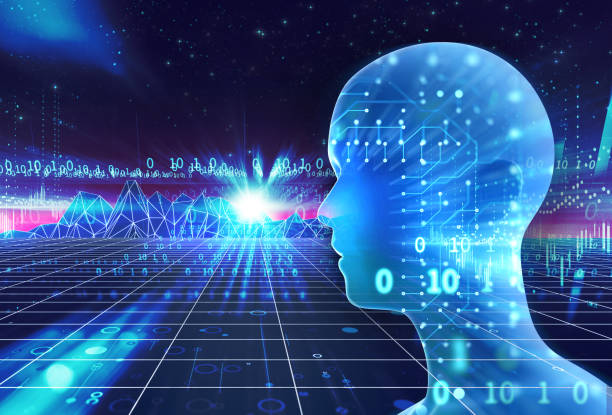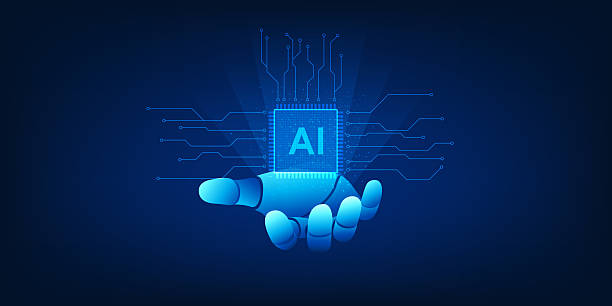What is Artificial Intelligence? Definition and Basic Concepts
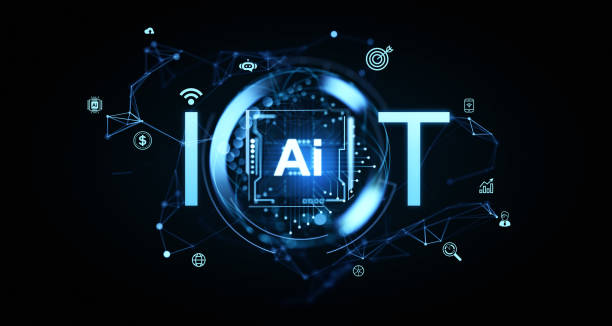
What is Artificial Intelligence? Definition and Basic Concepts
#Artificial_Intelligence (AI) is a branch of computer science dedicated to building machines and systems capable of performing tasks that usually require human intelligence.
These tasks include learning, reasoning, problem-solving, perception, and natural language processing.
The ultimate goal of AI is to create systems that can operate independently and intelligently.
Key concepts in artificial intelligence include:
- Machine Learning is a technique that allows machines to learn from data without explicit programming.
More information about machine learning - Neural Networks are computational models based on the structure of the human brain and are used for pattern recognition and deep learning.
- Natural Language Processing allows machines to understand and generate human language.
- Computer Vision allows machines to understand and interpret images.
- Robotics deals with the design and construction of robots and automated systems.
Artificial intelligence is currently used in many industries, including healthcare, finance, manufacturing, and transportation, and is expected to play an even more important role in our lives in the future.
Applications of artificial intelligence in everyday life include voice assistants such as Siri and Alexa, film and music recommendation systems, and self-driving cars.
Are you unhappy with low sales from your online store?
Rasaweb is your solution for having a professional and high-selling online store.
✅ Significant increase in sales and revenue
✅ Easy and enjoyable shopping experience for customers
⚡ Get a free consultation from Rasaweb now!
History of Artificial Intelligence from Beginning to Today

History of Artificial Intelligence from Beginning to Today
The history of artificial intelligence dates back to the 1950s, when researchers first began exploring the possibility of building machines that could think like humans.
The Dartmouth Conference in 1956 is often considered the official starting point of the field.
At this conference, prominent researchers such as John McCarthy, Marvin Minsky, and Claude Shannon gathered to explore the possibilities and challenges of artificial intelligence.
In the 1960s and 1970s, artificial intelligence saw significant advances in areas such as problem-solving and natural language processing.
However, this era was also accompanied by limitations in computing power and available data, leading to reduced funding and interest in the field in the late 1970s.
This period is often referred to as the “AI Winter.”
In the 1980s and 1990s, with the advent of more powerful computers and new algorithms, artificial intelligence was revived.
The development of expert systems and machine learning led to artificial intelligence being used in more practical applications.
However, this period also came with challenges in terms of the generalizability and scalability of algorithms.
Since the 2000s, with significant advances in deep learning and access to massive amounts of data, artificial intelligence has advanced rapidly.
Today, artificial intelligence is used in many industries, including healthcare, finance, manufacturing, and transportation, and is expected to play an even more important role in our lives in the future.
Advances such as deep neural networks and natural language processing have enabled artificial intelligence to perform tasks that seemed impossible just a few years ago.
Types of Artificial Intelligence and Their Applications
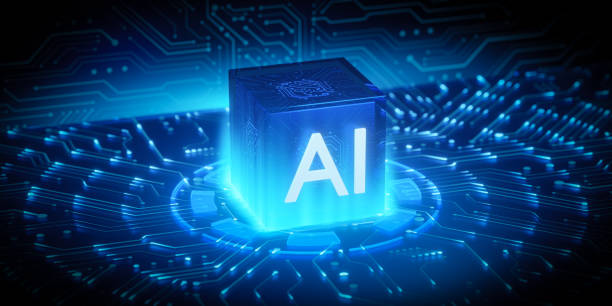
Types of Artificial Intelligence and Their Applications
Artificial intelligence can be divided into different categories based on its capabilities and applications.
One such classification is based on the level of intelligence:
- Narrow AI This type of artificial intelligence is designed to perform specific and limited tasks.
Most artificial intelligence systems used today fall into this category.
Examples include voice assistants such as Siri and Alexa, facial recognition systems, and film and music recommendation systems. - General AI This type of artificial intelligence is capable of performing any task that a human can do, with the same level of efficiency.
General artificial intelligence is still under development and is not widely used. - Super AI This type of artificial intelligence surpasses human intelligence and is capable of performing tasks that humans are unable to perform.
Super AI is still theoretical and does not exist.
The applications of artificial intelligence are very broad and have affected almost all industries.
Some of the most important applications of artificial intelligence include:
- Healthcare Disease diagnosis, drug development, and personalized care delivery.
- Finance Fraud detection, risk management, and automated financial services.
- Manufacturing Automation of production lines, quality control, and process optimization.
- Transportation Self-driving cars, traffic management, and route optimization.
- Education Providing personalized training, automated assessment, and development of educational content.
Artificial intelligence has the potential to significantly improve our lives, but it also presents challenges that must be addressed.
| Type of Artificial Intelligence | Applications |
|---|---|
| Narrow AI | Voice assistants, facial recognition |
| General AI | (Under development) Performing human tasks |
| Super AI | (Theoretical) Beyond human intelligence |
Machine Learning and Popular Algorithms
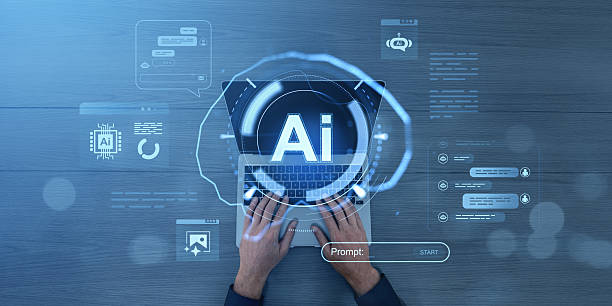
Machine Learning and Popular Algorithms
Machine learning is one of the main sub-branches of artificial intelligence that allows machines to learn from data without explicit programming.
In machine learning, machines use various algorithms to identify patterns and relationships in data and use these patterns to predict and make decisions.
More information about machine learning algorithms
Machine learning algorithms can be divided into different categories, including:
- Supervised Learning In this type of learning, the machine is trained using labeled data (i.e., data for which the correct answer is known).
Examples include linear regression, logistic regression, and support vector machines (SVMs). - Unsupervised Learning In this type of learning, the machine is trained using unlabeled data.
The goal here is to identify hidden patterns and structures in the data.
Examples include K-Means clustering and principal component analysis (PCA). - Reinforcement Learning In this type of learning, the machine interacts with the environment and receives rewards and penalties, learning how to behave to maximize the reward.
Examples include Q-learning and deep reinforcement neural networks.
Some of the popular algorithms in machine learning include:
- Linear Regression For predicting continuous values.
- Logistic Regression For classifying data into two or more categories.
- Decision Tree For building classification and regression models based on decision rules.
- Support Vector Machines For classifying data by finding the best boundary between categories.
- Neural Networks For learning complex patterns in data.
Machine learning is used in many applications, including facial recognition, voice recognition, film and music recommendation, and self-driving cars.
Is your company’s website as professional and reliable as it should be? Create an online presence that reflects your credibility and attracts more customers with professional corporate website design by Rasaweb.
✅ Build a powerful and professional image of your brand
✅ Turn visitors into real customers
⚡ Get a free consultation now!
Deep Neural Networks and Their Role in the Advancement of Artificial Intelligence
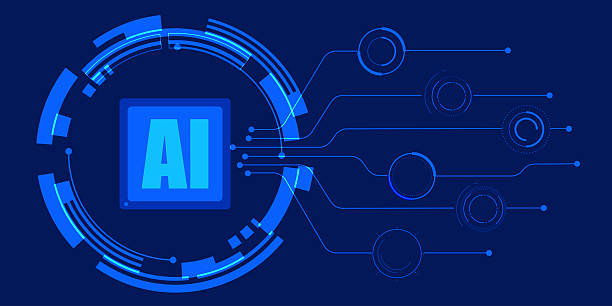
Deep Neural Networks and Their Role in the Advancement of Artificial Intelligence
Deep Neural Networks are a type of neural network that have multiple hidden layers.
These hidden layers allow the network to learn more complex patterns in the data.
Deep neural networks have played a significant role in the advancement of artificial intelligence and have achieved very good results in many applications, including computer vision, natural language processing, and voice recognition.
Deep neural networks are made up of artificial neurons that are connected in layers.
Each neuron receives an input, processes it, and produces an output.
Weights and biases in deep neural networks are adjusted so that the network can learn the desired patterns in the data.
Some types of deep neural networks include:
- Convolutional Neural Networks For processing images and videos.
- Recurrent Neural Networks For processing sequential data such as text and audio.
- Generative Adversarial Networks For generating new data.
Deep neural networks are used in many applications, including facial recognition, voice recognition, machine translation, and image generation.
For example, convolutional neural networks have been very successful in facial recognition and object detection in images, while recurrent neural networks have achieved very good results in machine translation and text generation.
Learn more about deep learning
Natural Language Processing and Its Applications in Everyday Life

Natural Language Processing and Its Applications in Everyday Life
Natural Language Processing is a branch of artificial intelligence that allows machines to understand and generate human language.
Natural language processing is used in many applications, including machine translation, voice recognition, sentiment analysis, and question answering.
The main goal of natural language processing is to create systems that can communicate with human language naturally and effectively.
Natural language processing involves various steps, including:
- Lexical Analysis Analyzing words and identifying their roots.
- Syntactic Analysis Analyzing the structure of sentences and identifying relationships between words.
- Semantic Analysis Analyzing the meaning of sentences and identifying relationships between concepts.
- Pragmatic Analysis Analyzing the speaker’s intention and understanding the meaning of sentences in context.
Some applications of natural language processing in everyday life include:
- Machine Translation Automatic translation of text from one language to another.
- Voice Assistants Answering questions and performing tasks through voice commands.
- Sentiment Analysis Identifying emotions in text.
- Chatbots Answering questions and providing support to customers.
- Spam Filtering Identifying and deleting unwanted emails.
Natural language processing has played a significant role in improving communication between humans and machines and is expected to play an even more important role in our lives in the future.
Artificial intelligence is progressing day by day in this field.
Computer Vision and Its Applications in Various Industries
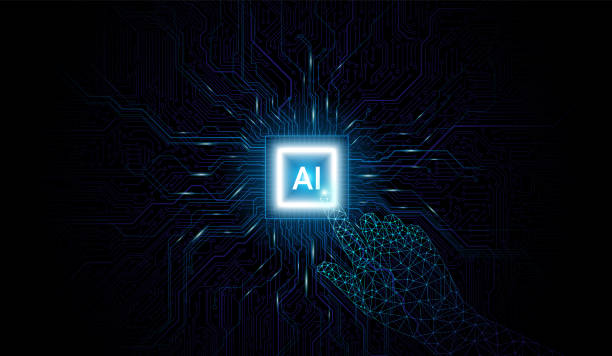
Computer Vision and Its Applications in Various Industries
Computer Vision is a branch of artificial intelligence that allows machines to understand and interpret images.
Computer vision is used in many industries, including automotive, healthcare, manufacturing, and security.
The main goal of computer vision is to create systems that can extract useful information and make decisions by seeing images.
Computer vision involves various steps, including:
- Image Acquisition Receiving images through cameras and sensors.
- Image Preprocessing Improving image quality and removing noise.
- Feature Extraction Extracting important features from images.
- Pattern Recognition Identifying patterns and objects in images.
- Image Interpretation Understanding the meaning of images and making decisions.
Applications of computer vision in various industries include:
- Automotive Self-driving cars, driver assistance systems.
- Healthcare Disease diagnosis, robotic surgery.
- Manufacturing Quality control, automated inspection.
- Security Facial recognition, video surveillance.
- Agriculture Detection of plant diseases, automatic harvesting.
Computer vision has played a significant role in improving the efficiency and accuracy of processes in various industries and is expected to play an even more important role in our lives in the future.
Many manufacturing and industrial companies use this #modern technology.
Robotics and the Role of Artificial Intelligence in the Development of Intelligent Robots

Robotics and the Role of Artificial Intelligence in the Development of Intelligent Robots
Robotics deals with the design, construction, operation, and application of robots and automated systems.
Artificial intelligence plays a very important role in the development of intelligent robots, as it allows robots to make decisions, learn, and interact with their environment.
Intelligent robots are used in many industries, including manufacturing, healthcare, and services.
More information about robotics
Artificial intelligence allows robots to perform the following tasks:
- Environmental Perception Using sensors to collect information from the surrounding environment.
- Planning Determining the best path to achieve the goal.
- Control Executing movements and tasks.
- Learning Improving performance using experience.
Some applications of intelligent robots include:
- Manufacturing Automation of production lines, assembly of parts.
- Healthcare Robotic surgery, patient care.
- Services Delivery of goods, cleaning.
- Exploration Space exploration, mineral exploration.
| Application of Intelligent Robots | Description |
|---|---|
| Manufacturing | Automation of production lines and assembly of parts |
| Healthcare | Robotic surgery and patient care |
| Services | Delivery of goods and cleaning |
| Exploration | Space exploration and mining |
Artificial intelligence has played a significant role in improving the performance and efficiency of robots and is expected to play an even more important role in our lives in the future.
With the advances made in the field of #artificial_intelligence and robotics, we will witness tremendous changes in everyday life.
Does your current website reflect your brand’s credibility as it should? Or does it scare away potential customers?
Rasaweb, with years of experience in designing professional corporate websites, is your comprehensive solution.
✅ A modern, beautiful website that matches your brand identity
✅ Significant increase in lead generation and new customers
⚡ Contact Rasaweb now to receive a free consultation on corporate website design!
Challenges and Future of Artificial Intelligence
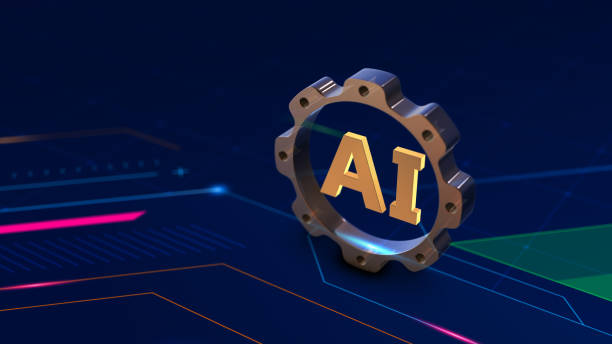
Challenges and Future of Artificial Intelligence
Despite its significant advances, artificial intelligence still faces numerous challenges.
Some of these challenges include:
- Privacy Collection and use of personal data.
- Security Cyber attacks and misuse of artificial intelligence systems.
- Ethics Ethical decision-making by machines.
- Employment Replacing the human workforce with machines.
- Generalizability Inability of algorithms to generalize to new data.
The future of artificial intelligence looks very bright.
Artificial intelligence is expected to play an even more important role in our lives in the future and will create significant changes in many industries.
Some important trends in artificial intelligence include:
- Explainable AI Efforts to create artificial intelligence systems that can explain their decisions.
- Ethical AI Efforts to create artificial intelligence systems that operate based on ethical principles.
- Automated AI Efforts to create artificial intelligence systems that can automatically develop machine learning models.
- Distributed AI Efforts to create artificial intelligence systems that can run simultaneously on multiple devices.
Given the rapid advances in the field of artificial intelligence, we expect to see tremendous changes in our lives in the future.
These changes can improve our lives, but they also present challenges that must be addressed.
How to Learn Artificial Intelligence? Resources and Solutions

How to Learn Artificial Intelligence? Resources and Solutions
Learning artificial intelligence can be an exciting and challenging path.
Fortunately, there are many resources to start learning artificial intelligence.
Here are some strategies and resources for learning artificial intelligence:
- Online Courses Platforms such as Coursera, edX, and Udacity offer numerous courses in the field of artificial intelligence.
- Books There are many books on artificial intelligence that can help you learn basic and advanced concepts.
- Scientific Articles Scientific articles can help you to deeply understand artificial intelligence algorithms and techniques.
- Practical Projects Doing practical projects can help you to learn artificial intelligence practically.
- Online Community Joining online artificial intelligence communities can help you connect with other enthusiasts and learn from them.
To start learning artificial intelligence, you can follow these steps:
- Learning Basic Concepts Start by learning basic concepts such as machine learning, neural networks, and natural language processing.
- Choosing a Programming Language Choose a programming language such as Python and learn it.
- Doing Practical Projects Doing practical projects to practice learned concepts.
- Taking Online Courses Taking online courses to learn advanced concepts.
- Joining the Online Community Joining the online community to connect with other enthusiasts and learn from them.
With effort and perseverance, you can learn artificial intelligence and succeed in this field.
Artificial intelligence is currently recognized as one of the most important technologies in the world, and learning it can create many job opportunities for you.
FAQ
| Question | Answer |
|---|---|
| What is artificial intelligence? | It is the simulation of human intelligence in machines programmed to think like humans and imitate their actions. |
| What are the main branches of artificial intelligence? | They include machine learning, deep learning, natural language processing, computer vision, and robotics. |
| What is Machine Learning? | It is a branch of artificial intelligence that focuses on enabling systems to learn from data and identify patterns without explicit programming. |
| Give examples of artificial intelligence applications in our daily lives. | Voice assistants (such as Siri and Alexa), recommendation systems in Netflix and Amazon, self-driving cars, and facial recognition software. |
| What is Deep Learning? | It is a subset of machine learning that uses artificial neural networks of multiple layers (deep) to process large amounts of data. |
| What is Natural Language Processing (NLP)? | It is a branch of artificial intelligence that focuses on enabling computers to understand, interpret, and generate human language. |
| What are some ethical concerns related to artificial intelligence? | They include bias in data, privacy, job loss, and responsibility in case of errors. |
| What are the main benefits of artificial intelligence? | Increased efficiency, improved decision-making, automation of repetitive tasks, and discovery of complex patterns in data. |
| How is artificial intelligence used in healthcare? | In disease diagnosis, drug discovery, medical image analysis, and personalized patient care. |
| How do you see the future of artificial intelligence? | It is expected to continue to evolve at a rapid pace, affecting all aspects of human life, from industry to education and entertainment. |
And other services of Rasaweb Advertising Agency in the field of advertising
Smart Digital Advertising: A combination of creativity and technology to increase click-through rates through Google Ads management.
Smart Brand Identity: An effective tool for analyzing customer behavior with accurate audience targeting.
Smart Digital Branding: An exclusive service for growth and sales increase based on marketing automation.
Smart Customer Journey Map: Transform website visits by optimizing key pages.
Smart Advertising Campaign: A professional solution for digital branding with a focus on intelligent data analysis.
And hundreds of other services in the field of internet advertising, advertising consulting, and organizational solutions
Internet Advertising | Advertising Strategy | Advertorial
Resources
Data Analytics at IBM
,What is Analytics? by SAS
,What is Predictive Analytics?
,Business Analytics from Oracle
? To reach the peak of success in the digital space, Rasaweb Digital Marketing Agency is with your business with specialized services such as SEO-optimized website design.
📍 Tehran, Mirdamad Street, next to the Central Bank, South Kazerun Alley, Ramin Alley, No. 6

